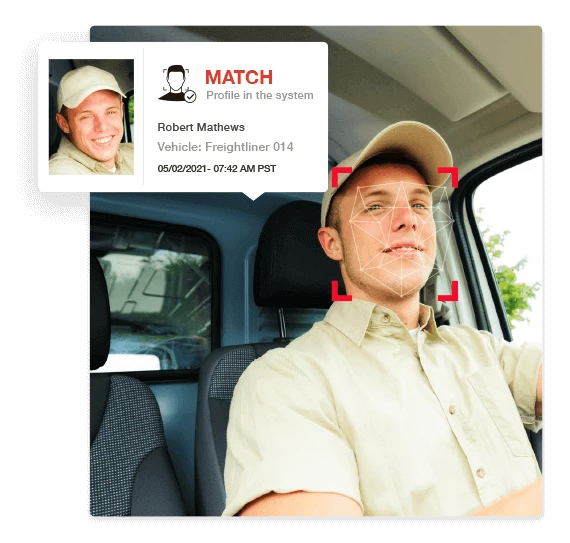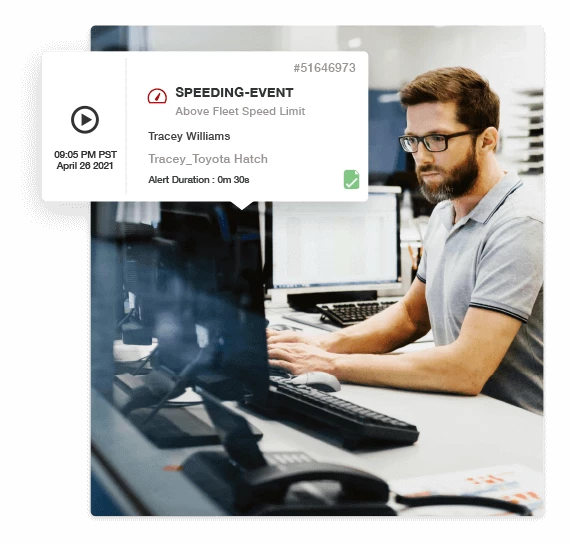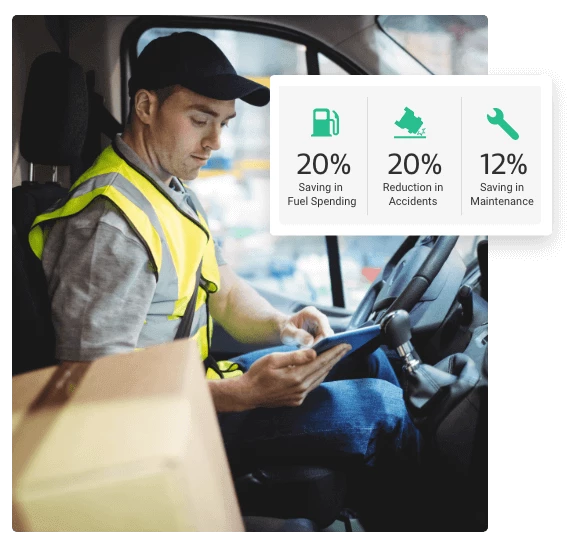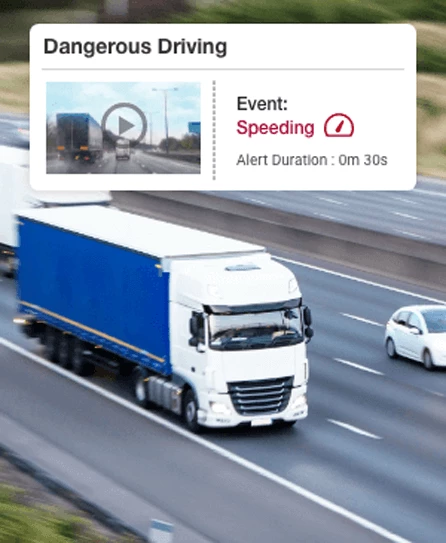Key Takeaways
Drivers aren't always quick to embrace change and can be quite resistant to change. Odds are, the day-to-day running of your fleet hasn’t changed much over the years. From scheduling work, maintaining vehicles and helping drivers get safely from A to B remain standard demands of the job. But the way you’re able to do these things is constantly evolving. Long gone are the days when technology was a ‘nice to have’. In the modern world, mobile technology, GPS tracking and fleet management systems are now essential for an efficient, cost-effective and safe fleet.
If you’re implementing a new telematics or fleet management solution, this guide will help you effectively manage the process.
How to get driver buy-in on fleet management software
Implementing new technology is no small task, particularly if it will be integrated into everyday practices and tools that staff are extremely comfortable with. It’s not only about testing and rolling out the tech, but also training employees, re-designing processes, predicting the likely learning curve and notifying stakeholders and customers of any expected disruption to the day-to-day. If it’s managed well, this process of change will pay off in the long-term with massive efficiency and cost-saving benefits. Consulting firm McKinsey found that excellent change management processes for big IT projects leads to an average return on investment of 143 per cent. Yet without a proactive approach, you could easily find your project is over budget and out of time, while unhappy employees struggle with the resulting chaos.
Every day, the assets in your business - along with the drivers themselves - are producing massive amounts of data. Hidden inside that data is the true story behind the business. That, in essence, is why fleet management software is so essential — it helps you dive beneath the data to make important business decisions in real-time. You may encounter a situation where drivers are skeptical of fleet management software being implemented. But with the right approach, you can help illustrate all the benefits and secure maximum support along the way.
Most Common Driver Struggles
At work, most of us are comfortable with our usual processes and habits, adopting a "it may not be perfect, but it gets the job done" philosophy. Solutions like telematics offer massive business benefits improving driver safety, reducing paperwork, streamlining job management, but the biggest challenge is helping your employees see why they should change their ways.
Drivers face many struggles when adopting new fleet management technology, including:
- An understanding of the technology
- Communication, or miscommunication
- Training, induction and coaching
- Privacy and safety
- Disruption to their workflow
When you’re implementing a tool like telematics and GPS fleet tracking software, every employee should be involved and invested in the process. It not only impacts drivers, but also operations managers, supervisors, back-office staff, despatchers and compliance managers. Identify some employee advocates who understand the benefits and can promote them internally while helping others to use it. When staff has a shared purpose and input into the process, it’s more likely they’ll be happy to start using it when the go-live date arrives.
Training and on-going coaching is arguably the most critical part of implementation - and it's certainly essential for getting user adoption. That's why any solution that you pick needs to be developed with the actual users in mind. Businesses should implement training programs to help drivers get used to new systems quickly, which will ultimately help the business to see the benefits quicker.

Why Drivers Express Resistance
Drivers express resistance to fleet tracking software for three main reasons:
- It’s seen as an invasion of privacy
- There’s a misconception that it makes more work
- Disruption
Privacy concerns are real and it’s important for drivers to feel confident in their work. Communicating to drivers what data is collected and how it will be used to improve business operations can help to ease these issues. Be transparent.
"But the old way of doing things was easier!" This is the most common objection in any process of change. Legacy processes are familiar and comfortable. To address this, highlight all the time, effort and cost being wasted on things like filling in forms, sharing them between teams, collating the data and generating reports. Compare this to the time it will take with a new system, where a driver can simply press a button and the relevant information is shared immediately with office staff and ready to download.
A study by T-Sheets found that employees are particularly concerned about privacy breaches, a lack of trust by their managers and their location being monitored. Tackling these concerns head on and dispelling any confusion is crucial if you want to stop them from taking hold before the solution is implemented. Focus on why technology is required, and how the digital tools provided by fleet tracking providers can simplify your drivers’ daily routines. Training will be a crucial aspect of success here.
Any large-scale technology project will involve some disruption. Minimising this is critical or you’ll end up with disgruntled employees, a delayed project timeline and unhappy customers. Your bottom line is also likely to take a hit. Undertaking change management as a project requires careful planning and advocacy from all staff to ensure that work can carry on as normal. Notifying customers about the change and keeping them in the loop will mean they’re more understanding if anything slips through the cracks.

Focus on the Bottom Line
GPS Fleet tracking is all about improving, safety, the bottom line, and finding more efficiency in both your fleet and your drivers. Understanding the cost of incidents and collisions, both injury and non-injury, will help drivers understand the benefits. According to the NHTSA, the average non-injury crash costs employers approximately $16,500. That number jumps to $74,000 when an injury in incurred and half a million dollars for a fatality.
And that doesn’t consider the employee. With a collision that occurred in a serious injury, it can put drivers out of work for weeks, months or even years, reducing their overall income. Employees can also take their learnings from work and apply them to their personal lives, realising their own fuel and insurance savings. A hidden benefit that isn't readily understood isn't till after telematics is installed. The bottom line here is data is key and how it provides metrics to improve on road behaviour. Focus on core statistics about the expected improvements and cost savings around safety, maintenance, and fuel.
When working with your solutions provider, don’t just treat them as a vendor. They’re invested in making the solution work for you, so you’ll get the best results if you think of them as an extension of your team. Remember, they’ve been through this process with many businesses before you, so they have plenty of experience to draw on and advice to provide. Keep them involved in all communication so they can work with you to overcome any internal challenges using tried-and-tested strategies.

How to Address Driver Top Concerns
Overall, addressing driver concerns when it comes to deploying GPS fleet tracking software requires a multi-angle approach. You need to speak to how it will ultimately help improve the safety of drivers on the road, along with going over the software features and benefits that they'll get to enjoy that they don't have access to right now.
Employees, including your drivers, need to understand exactly what the new solution will do, how it works, and what impact it will have on their jobs. Hold training sessions and encourage them to ask questions so you can respond to any concerns. Every relevant staff member should be included in the training so that they can all use the technology – whether it’s for driving, daily tasks, reporting or planning. This also means that multiple people can troubleshoot issues in the first stages, without causing a bottleneck of requests with your IT or operations team.
To speak to the first idea, don't just spring this change on them - communicate why you're making the change and let people know well in advance that this change is happening and, most importantly, why it's so crucial. Go into detail about how this will ultimately be a positive experience for them from various angles.
Likewise, communicate the significant features that your new solution will bring with it. Inform the driver of the benefits fleet tracking software has on the company’s digital transformation. GPS tracking will make it easier to plan for faster and more efficient routes and streamline workflows. It will help you locate a vehicle if it is ever lost or stolen. It will ensure compliance, optimise maintenance and diagnostics and more - all of which will make your driver's lives easier, not harder.

Set Goals & Be Prepared
Setting a brand-new system in front of employees with an "off you go" attitude is never going to work. A progressive approach allows everyone to get comfortable with the idea, the interface and new procedures expected of them. For example, spend the first week with a new telematics system just asking drivers to log in and send a status to the back-office. Once they’re used to doing that, you can launch the next feature or function. This way, drivers are more likely to buy into the process, without being overwhelmed. As a business, it also allows you to demonstrate ongoing success and small wins, even if there are some initial teething problems.
When you first launch any new technology, you want to have everything set up correctly so staff can just press "go". In particular, test for bugs and input all relevant data is in the system, so drivers don’t have to revert to old processes while they’re still learning the new. Set up all the driver and vehicle details correctly, from license numbers, license expiry dates to fatigue management rules, maintenance schedules and vehicle registration.
Your vehicles are only earning money when they’re moving, so don’t slow down the project timeline by being poorly prepared or neglecting to properly test the system. A delay of even a few months, or a negative first impression of the system, can have a huge impact on how effectively and enthusiastically your employees approach the transformation.

